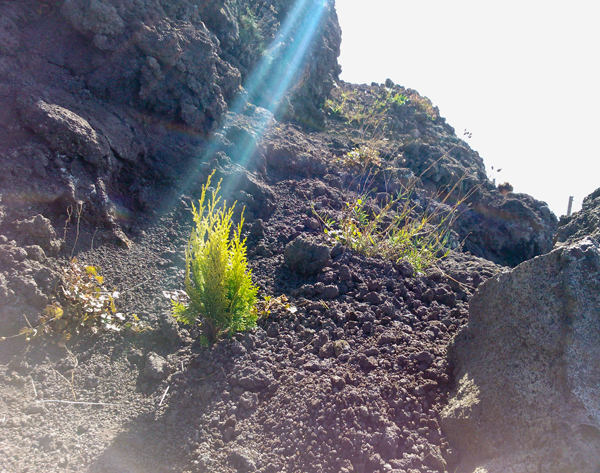Planting A Tree on the Vesuvius
The focus of the work is the tension between the residents and the natural environment in the region of Campania which is dominated by Mount Vesuvius. Although more than 600,000 inhabitants of the danger zone are threatened by a potential eruption, the population has not decreased since the last eruption 50 years ago, but even increased. Some of the most prominent reasons for them to take the risk of living there are the fertile soil thanks to the volcanic ash, the tourism resource and perhaps the Dionysian spirit in their blood.
Considering the local stress in Campania, in October 2012 I brought a small cypress with me from Germany to Italy and planted it at the edge of the volcanic crater. The cypress obviously an alien species would likely become the first victim of a future eruption. The action not only highlights the contradictory situation at the foot of the dangerous volcano, but also refers, in terms of my identification as a foreigner in Europe, on the issue of migration as a global phenomenon.
--
植树
这一作品所关注的是意大利南部坎帕尼亚地区居民与其自然环境间的张力。维苏威火山处于这一地区的中心,作为相当活跃的活火山,它随时可能到来的喷发威胁着当地居民的生命。然而自维苏威火山上一次喷发至今的50年内,该地区的人口不但没有减少,反而激增至超过60万人。吸引人们冒着生命危险前来的最重要原因是由火山灰形成的、有利于经济作物生长的肥沃土壤,丰富的旅游资源以及或许当地人血液中激荡的酒神精神。
就坎帕尼亚地区这一独特现象,2012年10月我从德国带着一棵小柏树来到意大利并将它在火山口种下。可以预见的是,这棵显然是外来物种的小柏树将会成为未来火山喷发的第一个牺牲品。这一行为不但是对危险的火山脚下矛盾生存状态的戏仿与回应,同时也是我,以一个在欧洲的外来者的身份,对在全球范围内发生的移民现象所进行的思考。
